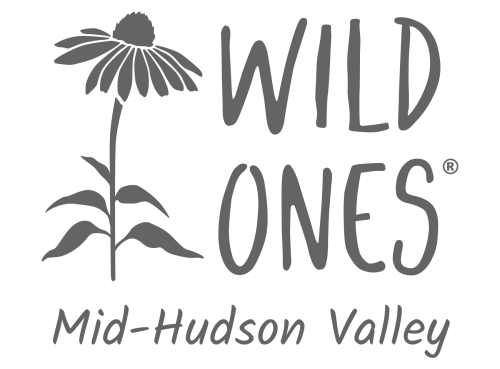Practicing Spring Patience
By Sara DeAngelis
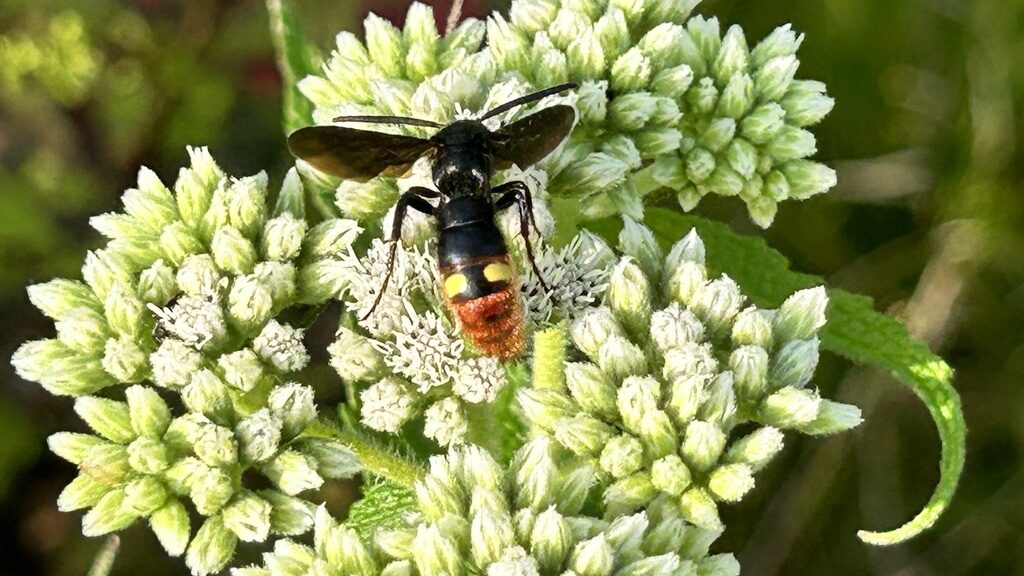
White Boneset Flower & Blue-winged Scoliid Wasp. We’ve tried to include plants with a wide range of bloom times in our garden beds so that as some plants finish, other species of flowers will appear. This is both attractive to us and very helpful to the wildlife we welcome. Photo: Sara DeAngelis
If you’re anything like me, you’re buzzing with anticipation for the warmer days of spring. I’ve had my seeds lined up with sowing dates for weeks! There are, however, excellent reasons to take a slow and more meditative approach when thinking about garden tasks at this time of the year. I urge you to resist making sudden changes and stripping your garden beds of fallen leaves, browned seed heads, and golden grasses.
Over the past month, I’ve read books and blogs and watched webinars by Nancy Lawson, Rebecca McMackin, Larry Weaner, and Doug Tallamy. Each reminded me of the importance of taking a holistic approach. One that respects the essential role of invertebrates in our gardens and the connection between that and what is sometimes called “debris.”
On a cold day last week, while doing some trimming, I disturbed a moth and several spiders hiding under the leaves. I gently put the few leaves I had moved back, replacing the roof to their sheltering spot. As the Xercies Society recommends, I trimmed last year’s stems to 8″ and 24″ high to provide future habitat for our many solitary bees, like carpenter bees (Ceratina spp), which use hollow plant material as bee nurseries. Many of our local bee species use native plants like bee balm (Monarda spp), roses (Rosa spp), and even yucca (Yucca spp) as places to lay their eggs. There is a dual benefit to this practice. For example, this year, the taller stems I leave for plants like Culver’s root (Veronicasatrum virginicum) will act as scaffolding for this year’s growth by adding more support for those tall white spires from summer breezes.
As I walk through my garden beds this spring, I practice patience and reflect on the importance of the relationship between plants and animals. Nancy Lawson shares the many relationships between plant species, pollinators, and a healthy wildlife habitat in her books. I translated some of her advice into limiting how much old plant material I cut back. It also means that I move twigs and larger fallen branches to my brush fence as a potential wildlife home. My yard is not large, so rather than having a brush pile, we stack branches and twigs along an existing metal fence, building a vertical wall of old material. That structure becomes a safe nesting place for many species, including birds, chipmunks, spiders, and snakes. These, in turn, provide valuable insect and slug control in my hard. From Doug Tallamy and Rebecca McMakin, I know now that birds need thousands of soft-bodied insects a day to feed their chicks. If I hope to see moths and butterflies, I need to not only provide the adults with food, but to supply their caterpillars with host plants, and offer shelter for those species that overwinter here like the Mourning cloak butterfly (Nymphalis antiopa).
As I’ve shared some stems stay, but I’ll think carefully about how many leaves I’ll remove. The lighter leaves (oaks, maples, redbud, etc.) will either stay on the beds where they’ve fallen or be relocated to the base of one of the mock orange thickets (Philadelphus coronarius). I will cut our grasses back because we already have many mouse and vole habitats. Some leaves, like those of the irises, that have become a heavy thatch that smothers the new growth, will either be chopped and left in the beds or set aside as brown material to add to the compost over the summer.
Reflecting on the ways we can work with natural processes more is a practice I’m still learning about. I am delighted to see more and more plant and animal interactions in my garden. While having patience and carefully considering how I approach my waking garden is a challenge, I find it easier when I spend time in the garden if I think about how my future garden will look and how it will function harmoniously with wildlife. When I reflect on what new species I can welcome into my home habitat, I’m considering both the many plants I love and the organisms that will benefit from them as food, nesting sites, and shelter.
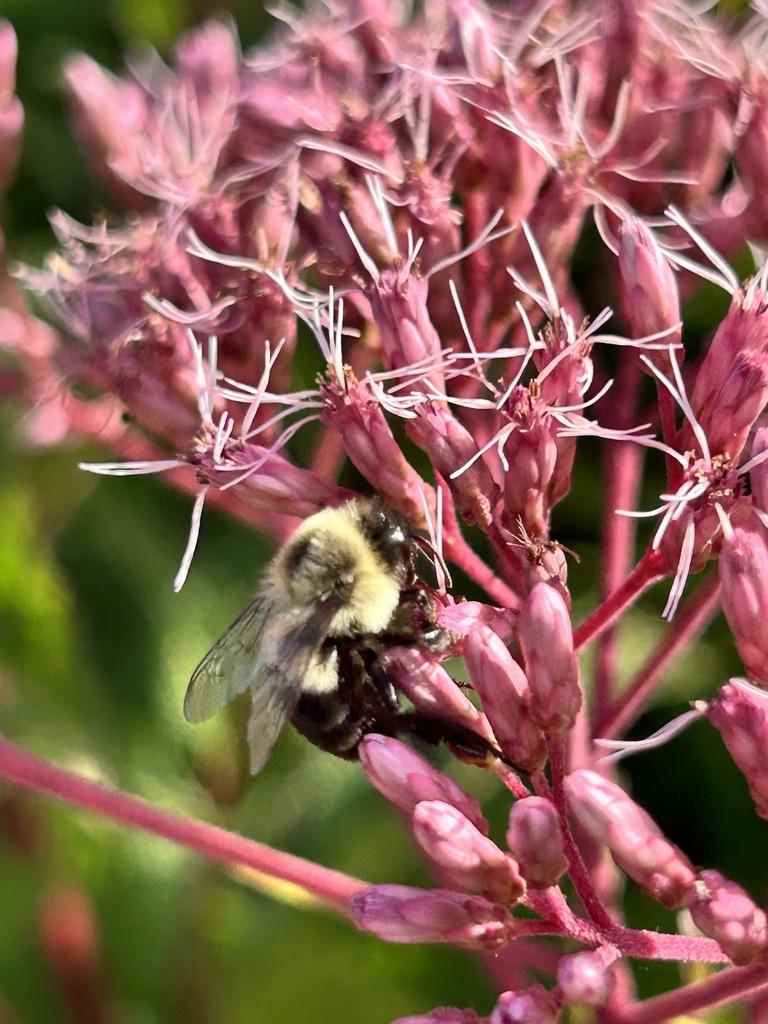
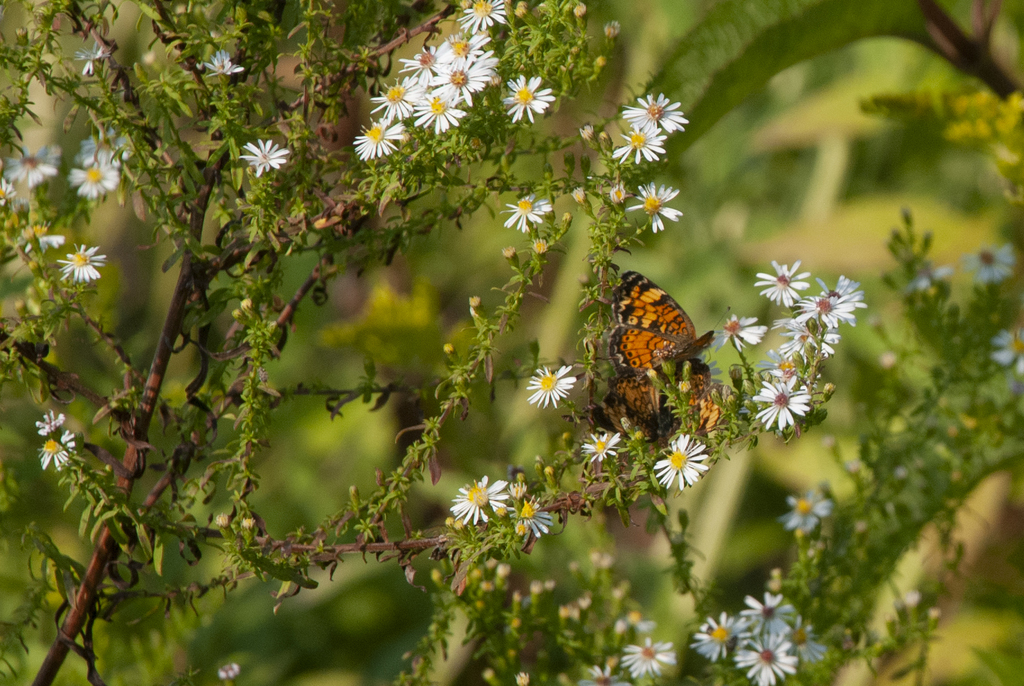
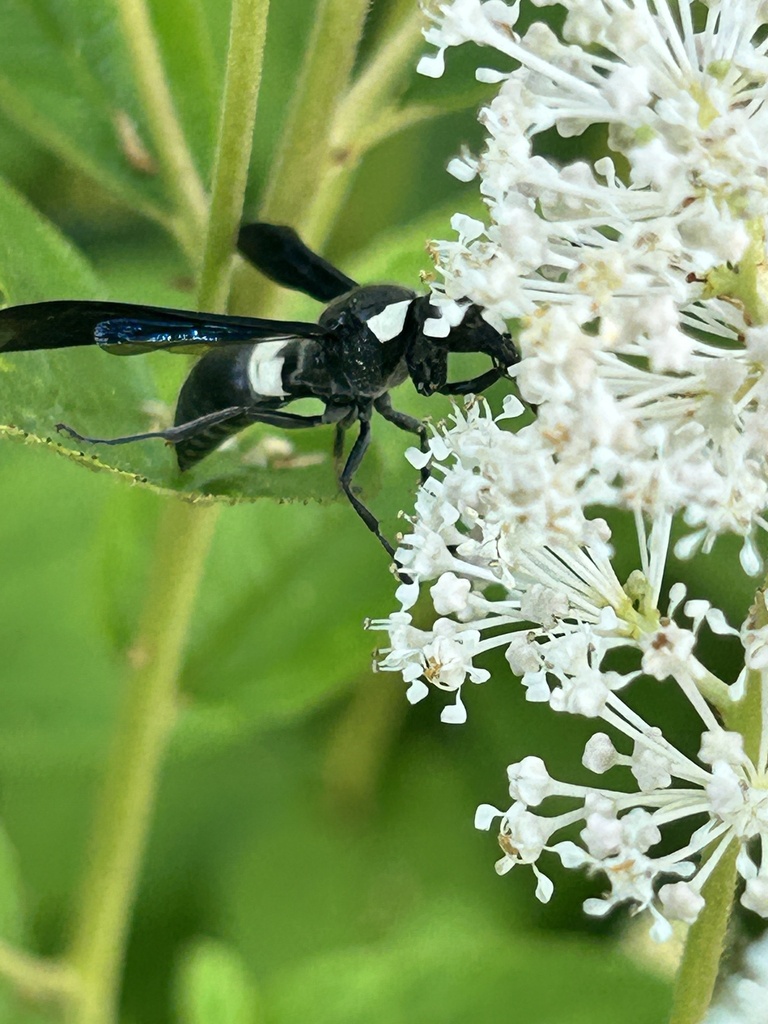
Photo 1 (from left to right) : Joe-Pye Weed & Bumble Bee. Joe-Pye Weed (Eutrochium sp.) is a fabulous late summer/fall flowering plant that attracts pollinators like this Common Eastern Bumble Bee (Bombus impatiens), and they grow well in our yard’s moist soil. Photo: Sara DeAngelis
Photo 2: Aster & Crescent. As in much of the Hudson Valley, Asters (Symphotrichum sp.) like these are volunteers in our garden. Their open flower structure and sequential blooms make them a favorite of butterflies. Photo: Sara DeAngelis
Photo 3: New Jersey Tea & Four-toothed Mason Wasp. New Jersey Tea (Ceanothus americanus) is a small spring-blooming shrub we planted from garden plugs that attracts a wide range of pollinators, including these boldly coloredFour-toothed Mason Wasps (Monobia quadridens). Photo: Sara DeAngelis
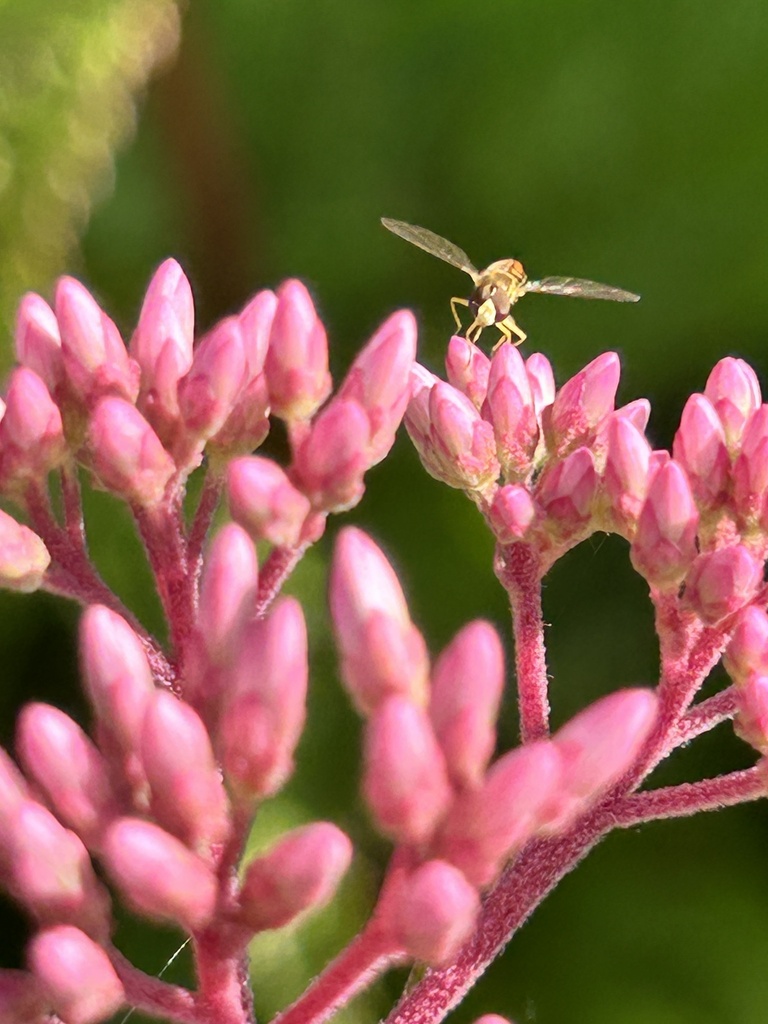
SUGGESTED READING/VIEWING
The Humane Gardener and Wildscape, by Nancy Lawson, nature writer and habitat consultant.
Let Your Garden Grow Wild, TED Talk by Rebecca McMackin, ecological horticulture advocate and garden deisgner. She also has an informative newsletter.
Garden Revolution, by Larry Weaner, landscape designer and founder of NDAL, an educational organization dedicated to ecology-based landscape design and practice.
Bringing Nature Home, by Dr. Douglas Tallamy, author, entomologist, behavioral ecologist, and founder of Homegrown National Park.
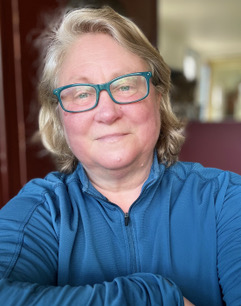
Sara DeAngelis is a consultant and educator in exhibition and experience design. She has been studying ecological landscape principles for several years and began focusing on gardening with native plants while living in California. She documents her plants, pollinators, and other wildlife on iNaturalist. In her spare time, she and her husband garden and are transforming much of their Ulster County yard into wildlife-friendly native gardens and meadows.
